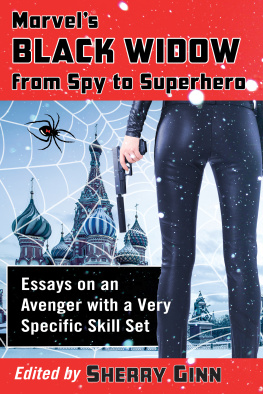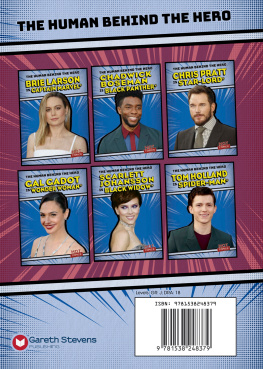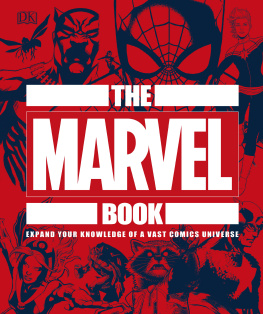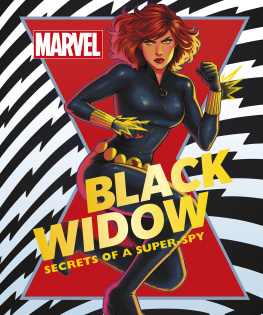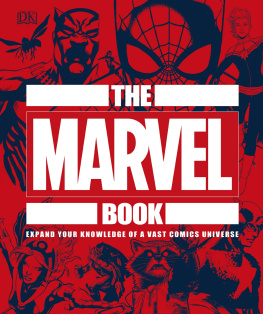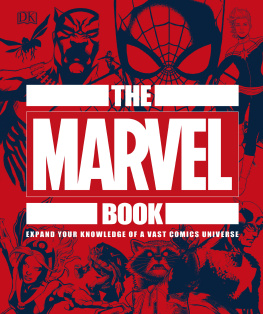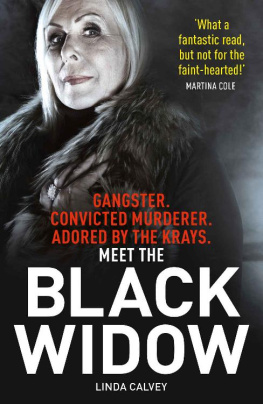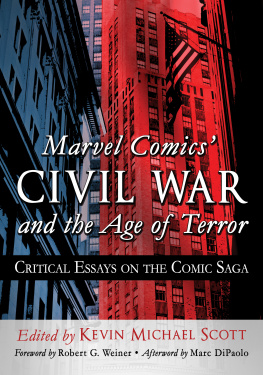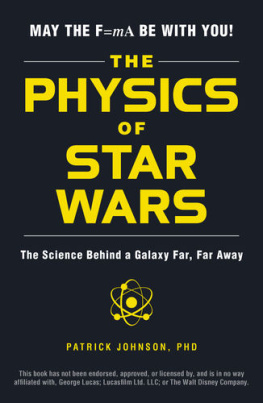
Marvels Black Widow from Spy to Superhero
Essays on an Avenger with a Very Specific Skill Set
Edited by SHERRY GINN

McFarland & Company, Inc., Publishers
Jefferson, North Carolina
ALSO OF INTEREST AND FROM MCFARLAND
Power and Control in the Television Worlds of Joss Whedon, by Sherry Ginn (2012),Who Travels with the Doctor? Essays on the Companions of Doctor Who, edited by Gillian I. Leitch and Sherry Ginn (2016), The Multiple Worlds of Fringe: Essays on the J.J. Abrams Science Fiction Series, edited by Tanya R. Cochran, Sherry Ginn and Paul Zinder (2014), The Worlds of Farscape: Essays on the Groundbreaking Television Series, edited by Sherry Ginn (2013), The Sex Is Out of This World: Essays on the Carnal Side of Science Fiction, edited by Sherry Ginn and Michael G. Cornelius (2012)
LIBRARY OF CONGRESS CATALOGUING DATA ARE AVAILABLE
BRITISH LIBRARY CATALOGUING DATA ARE AVAILABLE
e-ISBN: 978-1-4766-2716-8
2017 Sherry Ginn. All rights reserved
No part of this book may be reproduced or transmitted in any form or by any means, electronic or mechanical, including photocopying or recording, or by any information storage and retrieval system, without permission in writing from the publisher.
Cover images 2017 iStock
McFarland & Company, Inc., Publishers
Box 611, Jefferson, North Carolina 28640
www.mcfarlandpub.com
For Tanya, Heather, and Gillian
and all of the other female fans of science fiction
Acknowledgments
As ever I would like to thank everyone who made this collection possible. Larry Williamson was his ever patient self as I holed up in the study to work on this manuscript or as he watched the movies and TV shows with me. Tanya Cochran is my go-to person for all questions about writing and I appreciate her insightful comments about my work. Heather M. Porter deserves thanks for her work on a number of items within this document as well as with general support. This book grew out of a roundtable discussion held at the Popular Culture Association annual meeting in 2014, led by my Science Fiction and Fantasy Area Co-Chair, Gillian I. Leitch, and one held at the Popular Culture Association of the South, also in 2014, led by Tanya, Heather, and myself.
Introduction
Black Widows Place in Marvels Universes and Our Own
SHERRY GINN
I am always picking up after you boys.
Natasha Romanoff,Avengers: Age of Ultron
It was Labor Day weekend 2013 and I was at Dragon Con with my friends Tanya and Heather. We were waiting for the elevator and discussing the difficulties we were havingnot the crowds, the heat, or the interminable wait for the Westin elevatorbut in finding Black Widow merchandise. The t-shirts looked like they would fit my cat (who is rather large for a cat but certainly not human-sized), and the lack of toys and action figures had not gone unnoticed.
I was, however, discussing a collectible I had seen: it actually looked like Scarlett Johanssonwho portrays Black Widow in the Marvel Studios filmsbut was unfortunately a little pricey. As we were exiting the elevator, I commented that the figure looked like Johansson, dipped in wax. Someone getting onto the elevator responded that she would love to have Scarlett Johansson dipped in wax. We all laughed but several things were apparent in the moment: people like the character of Black Widow, as portrayed by Johansson, for a variety of reasons; women want action figures of their favorite female characters; and merchandise for those characters is difficult to find. Two years later, a visit to Target left me dismayed to discover a set of action figures for Avengers: Age of Ultron that contained eight characters from the film: all were male. A film with two major female characters, one of whom (Black Widow) appears in more than a quarter of the scenes of the film (see Porters essay), is still unable to generate a marketing strategy aimed at its female audience.
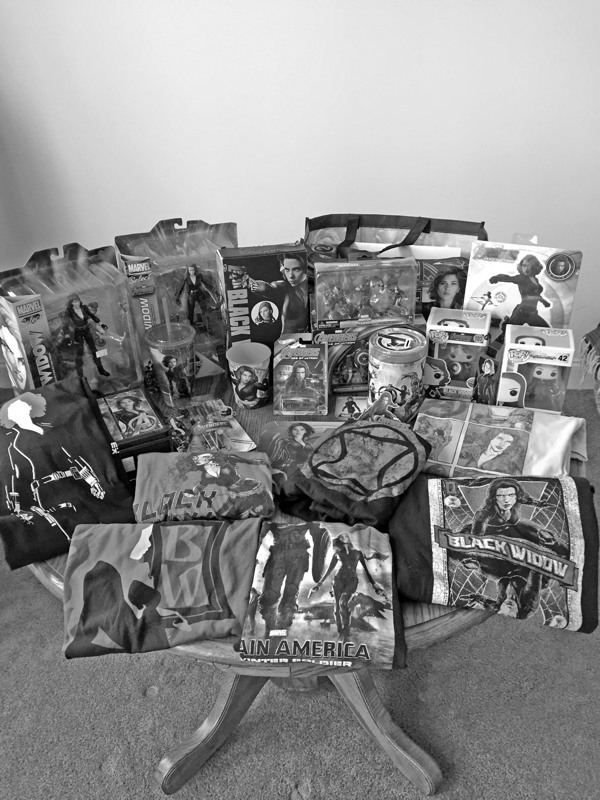
Selected Black Widow merchandise from the editors collection (photograph by Larry Williamson).
Disney has already captured the female market with its fairytale princess dolls and their accoutrements. Hello, Disney! I am not the fairytale princess type and neither are a large number of women with money. What type of marketing strategy does a company have when it does not want to generate new sales? Consider the National Football League (NFL). I was a pretty rabid football fan in my youth. Realizing that women like footballand not just because they want to attract menthe NFL began marketing their brand to women. They hired designers to make clothes for womenalthough they seem to think that the average American woman is a size 2 rather than a size 14and the NFL is now one of the richest organizations in the world. I live in NASCAR country and NASCAR has not only rebranded itself into a female-friendly sport, but a family-friendly one as well. Why Disney would want to exclude women from its marketing plans just does not make sense.
A Positive Role Model for Female Power
After my last viewing of Marvels The Avengers, I was finally able to articulate something I have been trying to speak to for about fifteen years. It has to do with power. It goes beyond the idea that women want strong female characters and all of the arguments raging on the internet for and against the Strong Female Character. Beginning somewhere around the turn of this century, I began talking about female characters on science fiction television (SFTV). My remarks generally revolved around Ambassador Delenn and Commander Susan Ivanova of Babylon 5; Beka Valentine of Gene Roddenberrys Andromeda; Major Kira Nerys and Lt. Commander Jadzia Dax of Star Trek: Deep Space Nine; Officer Aeryn Sun of Farscape; and Zoe Washburn of Firefly and Serenity. In one of my first presentations years ago, an audience member was disturbed that all of these characters were not only capable of using violence in their encounters with men and other women, but that they frequently did so. That audience member wanted to find strong female characters that did not resort to violence to solve problems or to prove their strength. We are still looking for those characters today, at least a decade later.
Since that presentation, we have seen even more strong female characterssuch as Black Widow, Gamora, River Song, Agents May and Carteron television and film that use many strategies to solve problems, including violence. What I can articulate much better now is that these women can give a punch but they can also take one. These women are on the receiving end of violence as well as giving it. What I see is a different mind-set from the all-too-pervasive violence against women occurring in various countries around the world. It is true that in these films and TV series men aggress against female characters, but the women are not afraid of them. The men in these situations are aware that the women will fight back, and hard. In reality, men who are violent against women are violent because they can be. They have learned that they can hurt women and get away with it, for a wide variety of reasons. They know that women fear them and that gives them power. However, in the world of science fiction, there are wonderfully drawn female characters who do not give their male counterparts either physical or psychological power over them. Aeryn Sun is not afraid of men; nor is Zoe or Delenn or Ivanova or Kira. Certainly Black Widow is not. These characters live in worlds where women do not have to be afraid of men, where women have agency, where women have power. And that gives hope to us all.
Next page
